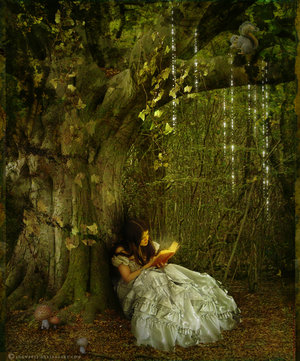 |
| Art: Atriedes |
If you're an avid reader of Tolkien, you have probably heard of "Eucatastrophe," the word Tolkien uses to describe a sudden turn towards joy in a story. It comes from his essay, On Fairy Stories (which, if it wasn't obvious enough in this blog, I heartily recommend). There, Tolkien describes fantasy as offering three gifts for the reader: Escape, Recovery and Consolation. Eucatastrophe is included in Consolation and is perhaps the most rewarding. Tolkien not only states that every
complete fairy story must have “the Consolation of the Happy Ending” (153), but that the fairy tale’s “highest function” (153), in fact, is to provide
the opposite of tragedy, to provide “eucatastrophe” (153), the good
catastrophe.
The most simple and clear examples of Eucatastrophe in Tolkien's work are his eagles. I wouldn't be surprised to find out that for those who have watched Peter Jackson's films without reading the books, the eagles are more of a 'Deus ex Machina' or seem to be, at the very least, an easy solution for a sticky situation. But they are much more than that because Eucatastrophe is much more than just a happy ending. The eagles only come unlooked for when all hope is lost. And Eucatastrophe is a joy that relies on sorrow, for it is the “sudden turn” (153) away from
sorrow and towards joy at the fairy tale’s conclusion. It is a saving grace
that comes only when we feel all is lost for the protagonist and one that Tolkien
describes as a joy that takes the reader’s breath away (154). It is an element inherent
to the story but never “to be counted on to occur” (135) (it is in this way
distinguished from Deus Ex Machina). And it is thus a joy “poignant as grief”
(153).
Tolkien believes that eucatastrophe does not only make
the reader happy or save the protagonist from a supposed certain death, but it also
helps the reader glimpse a truth of the world that is ordinarily hidden. It is,
he states, the “satisfaction and answer to that question ‘is it true?’” (155)
and it allows us to see, if only for a brief moment, a greater truth. For Tolkien,
this glimpse of truth is in harmony with “the Christian joy, the Gloria” (156). He suggests that even eucatastrophe’s
“fleeting glimpse of Joy” (153) is still an echo, a “far off gleam of evangelium in the real world” (155). The only joy, Tolkien supposes, that is
comparable to eucatastrophe could only be felt if one were to find out that a
beautiful fairy story is true. The most beautiful story for Tolkien, is the
resurrection of Christ. He suggests that this story is the “Great
Eucatastrophe” (155) because it is the one story above all other stories we
wish to find true and it is the one story that is true (156).
However, Tolkien also suggests that, “all tales may yet
come true” (157). And thus eucatastrophe
can resonate with any readers, religious or unreligious. When written into a
fairy story, eucatastrophe plays an important role in guiding the reader closer to a
higher truth, bringing hope where there was despair, and joy where there was
sorrow.
Read 'On Fairy Stories' in celebration of Tolkien Reading Day here! You can also pick up your favorite book and read your favorite chapter or even scroll through some Tolkien quotes



